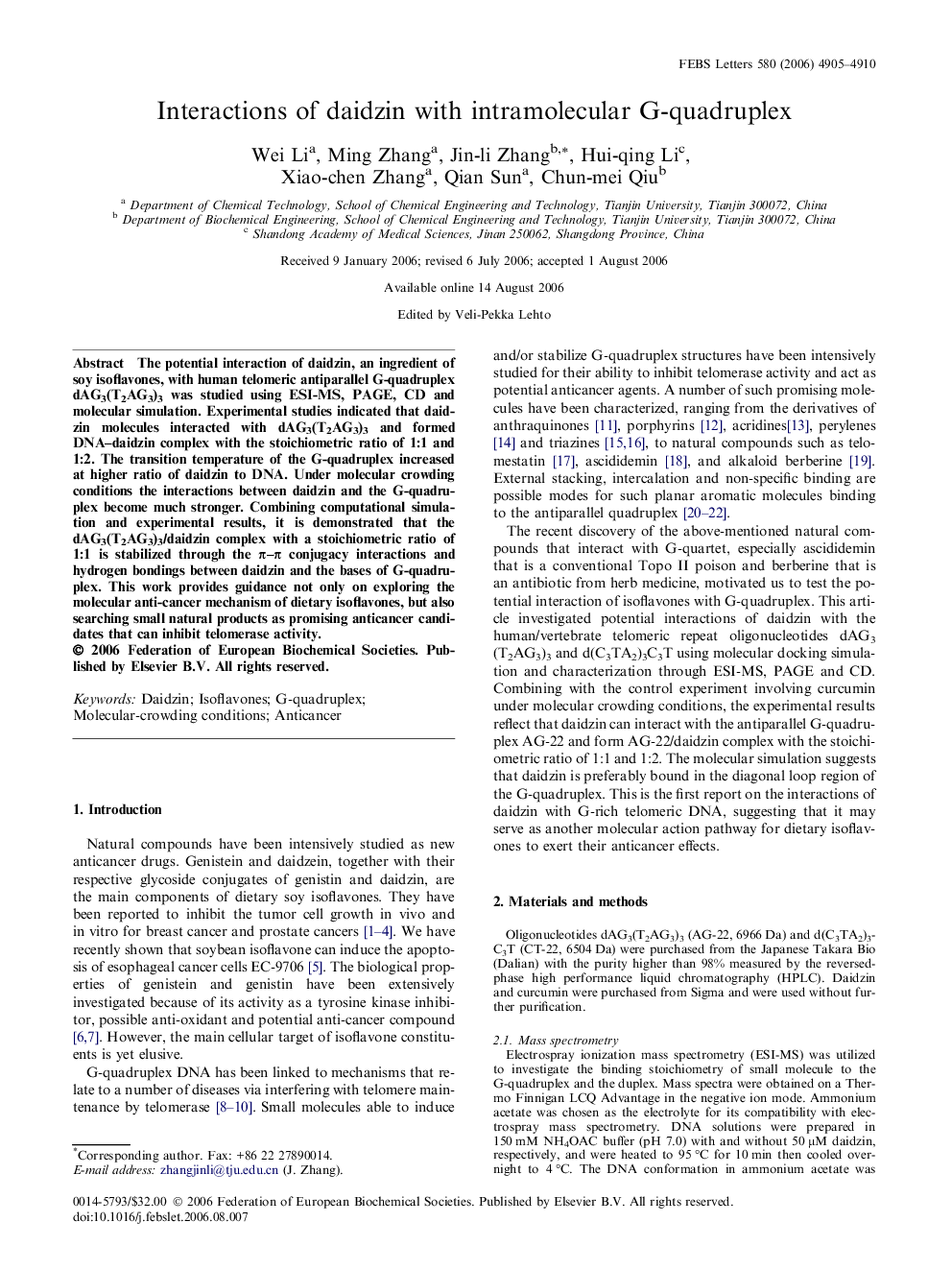| Article ID | Journal | Published Year | Pages | File Type |
|---|---|---|---|---|
| 2052493 | FEBS Letters | 2006 | 6 Pages |
The potential interaction of daidzin, an ingredient of soy isoflavones, with human telomeric antiparallel G-quadruplex dAG3(T2AG3)3 was studied using ESI-MS, PAGE, CD and molecular simulation. Experimental studies indicated that daidzin molecules interacted with dAG3(T2AG3)3 and formed DNA–daidzin complex with the stoichiometric ratio of 1:1 and 1:2. The transition temperature of the G-quadruplex increased at higher ratio of daidzin to DNA. Under molecular crowding conditions the interactions between daidzin and the G-quadruplex become much stronger. Combining computational simulation and experimental results, it is demonstrated that the dAG3(T2AG3)3/daidzin complex with a stoichiometric ratio of 1:1 is stabilized through the π–π conjugacy interactions and hydrogen bondings between daidzin and the bases of G-quadruplex. This work provides guidance not only on exploring the molecular anti-cancer mechanism of dietary isoflavones, but also searching small natural products as promising anticancer candidates that can inhibit telomerase activity.
